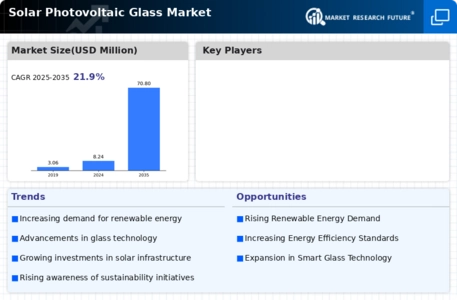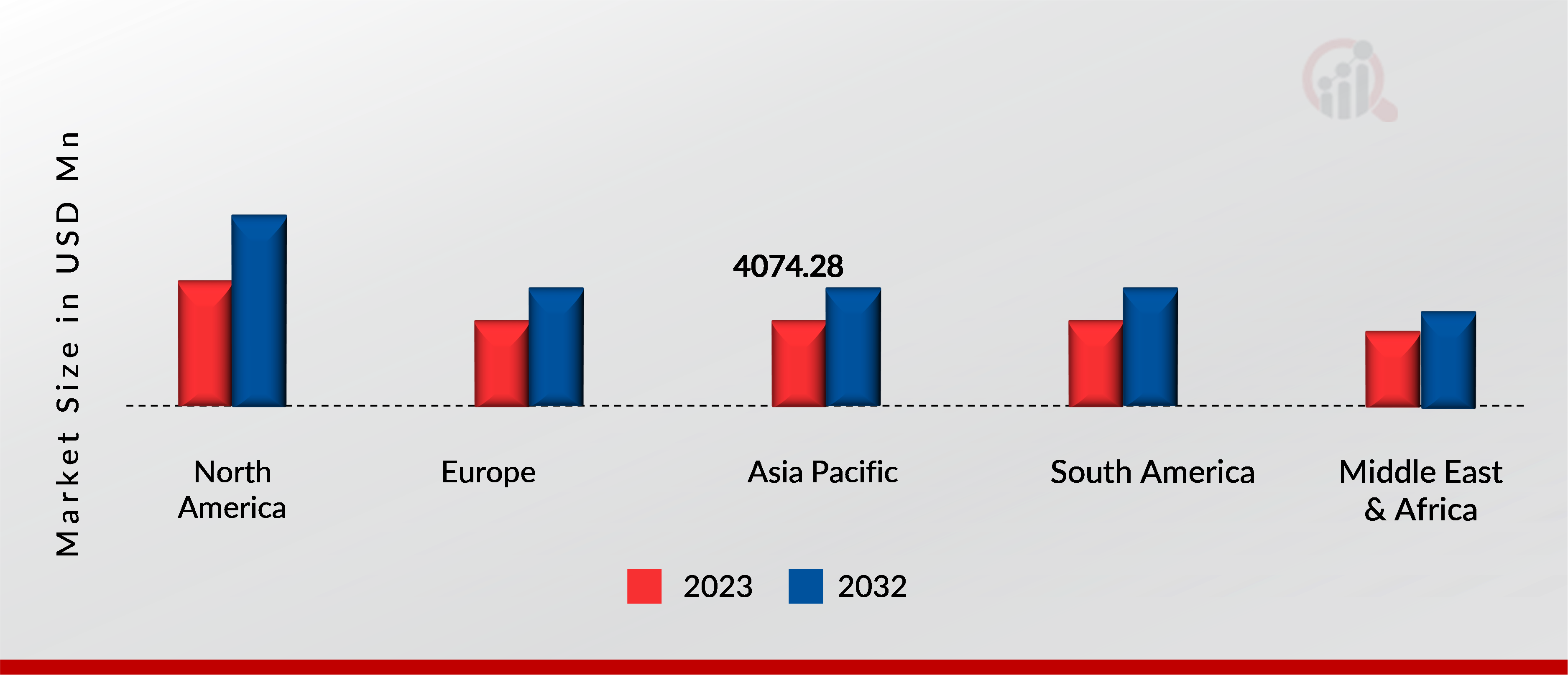Government Policies and Incentives Across the Globe
Around the globe, governments indorse the utilization of solar energy through laws and other support systems including feed-in tariffs, tax breaks, and subsidies. By reassuring people and companies to invest in solar energy installations, these incentives increase the economic feasibility of solar power. Simplified permitting systems and advantageous regulatory frameworks additionally aid in the industry progress. The growing popularity of solar PV technology is powered by favorable government policies, subsidies, feed-in tariffs, tax breaks, and renewable energy objectives, which raises the need for PV glass.
Investments in solar PV systems are encouraged by policies that support the production of clean energy and the reduction of carbon emissions, which drives market expansion.
Some of the keyways in which government policies and incentives drive the global solar PV glass market include:
Feed-in Tariffs (FITs): Governments harness feed-in tariffs, which secure a fixed price for solar electricity generated over a certain period. This incentivizes venture in solar PV projects by granting certain revenue streams, making solar PV installations economically feasible for developers and investors. Countries like Japan, China, and India have implemented Feed-in Tariffs programs or competitive seeking processes to procure solar power at determined prices. These mechanisms provide revenue certainty for solar PV developers, leading to increased investments in solar installations and demand for PV glass.
Tax Incentives and Subsidies: Governments offer tax incentives, rebates, grants, and other financial subsidies to encourage investments in solar PV projects. For example, From 26 September 2023, “Solar for Electric Vehicles (442)” scheme, provides grants of up to USD 10,793.9 for the purchase and connection of charging stations, photovoltaic systems, and solar energy storage systems. These encouragements make solar PV installations more inexpensive for residential, commercial, and industrial customers, driving demand for PV glass. Tax incentives for manufacturers of PV components further stimulate the growth of the PV glass market.
Renewable Energy Targets: Many countries have set renewable energy targets as part of their energy policies to reduce greenhouse gas emissions and promote sustainability. Governments launch specific targets for solar PV capacity additions, pushing the distribution of solar PV systems. To achieve these targets, there is a corresponding increase in demand for PV glass to construction solar panels. For Instance, The European Union (EU) has a target of 42.5% renewable energy in its 2032 budget, which includes solar power. The EU has been producing more renewable energy in recent years, with 22.5% of its 2022 energy utilization coming from renewable sources. Additionally, India has a target of 500 GW of renewable energy capacity by 2032, including 448 GW from solar energy. The country also has a target of achieving 50% of its total electric power from non-fossil fuel-based energy sources by 2032.
Rising Energy Demand and Urbanization for Building Integrated Photovoltaics (BIPV) Market
Rising energy demand and urbanization generate favorable circumstances for the growth of the Building Integrated Photovoltaics (BIPV) market, dynamic demand for renewable energy solutions that address the energy needs of urban populations while endorsing sustainable development and elasticity in urban environments which in turn drives global PV Glass market during the forecast period.
Increased electricity utilization in urban areas can lead to an increased demand for Building-Integrated Photovoltaics (BIPV), which is a renewable energy solution that can be used to replace conventional building materials. BIPV can be used in parts of the building envelope, such as the roof, skylights, or façades. Urbanization is often accompanied by a surge in energy consumption due to higher population densities and increased economic activities. Urban areas require electricity for various purposes, including lighting, heating, cooling, appliances, and industrial processes.
Additionally, the growing market for BIPV systems drives innovation and technological advancements in PV glass manufacturing. Manufacturers constantly develop PV glass products with developed efficiency, durability, aesthetics, and integration capabilities to meet the evolving demands of the BIPV market. For instance, In December 2023, AGC has announced the integration of Sunjoule, a specialized Building Integrated Photovoltaic (BIPV) glass, into the roof of the bicycle parking lot situated at the Shizuoka Station North Exit Square.
The installation of this roof was carried out by TOKAI Cable Network Corporation, enabling the generation of solar power with a remarkable maximum output of 3.7kw using Sunjoule technology. This development highlights AGC's commitment to sustainable and renewable energy solutions in real-world applications. Technological advancements in PV glass contribute to the overall growth and expansion of the BIPV market in response to rising energy demand and urbanization. According to statista, as shown below the global building integrated photovoltaics market estimated a value of around USD 10.8 billion 2022.
The building integrated photovoltaics market is expected to experience a steep growth in the next years. Building integrated photovoltaics are materials that perform traditional functions in buildings and generate electricity from the sun. They can replace traditional construction materials such as roofs, facades, and skylights. This multifunctionality offers great potential for the implementation of solar PV in buildings which drives the global PV glass market.
Growing Demand for Solar Energy and Reduced Installation Cost for Solar Photovoltaics Worldwide
PV glass manufacturers can expand their market reach and establish a presence in new geographic regions, leveraging the growing demand for solar energy worldwide.
According to IEA, Solar photovoltaics (PV) maintained its top spot as the most invested in power generating technology in 2022. The year witnessed a record-breaking growth in global solar PV capacity expansion investments of over 20%, surpassing USD 320 billion. In 2022, solar photovoltaics (PV) accounted for over 45% of all worldwide investments in power generation, which is quadruple the amount spent on all fossil fuel technologies combined. PV investment is anticipated to rise in the upcoming years due to aggressive government goals, supportive policies, and rising competitiveness.
The demand for solar energy is not limited to traditional utility-scale solar farms. There's also a growing market for distributed generation, rooftop solar installations, and off-grid solar systems. PV glass finds applications in various segments such as residential, commercial, industrial, and institutional buildings, as well as in agriculture, transportation, and infrastructure projects. This diversification of market segments broadens the opportunities for PV glass manufacturers to address different customer needs and market niches.
Technology advancements to lower solar power costs over long term contribute to drive solar energy market in forecast period. Technological advancements in the solar industry, such as tracking components, digitalization technologies, and solar modules, will lower project costs and boost the overall effectiveness of solar power projects. Furthermore, by the middle to end of the next decade, there is a chance for further notable improvements in conversion efficiencies and considerable cost reductions due to the continuous advancements in solar cell technologies, especially perovskite solar cells. This presents profitable opportunities for the solar PV glass market during the forecast period.
.webp
The increasing adoption of solar energy technologies is driving a notable shift towards advanced photovoltaic glass solutions, which are poised to enhance energy efficiency and sustainability in the renewable energy sector.
U.S. Department of Energy












Leave a Comment